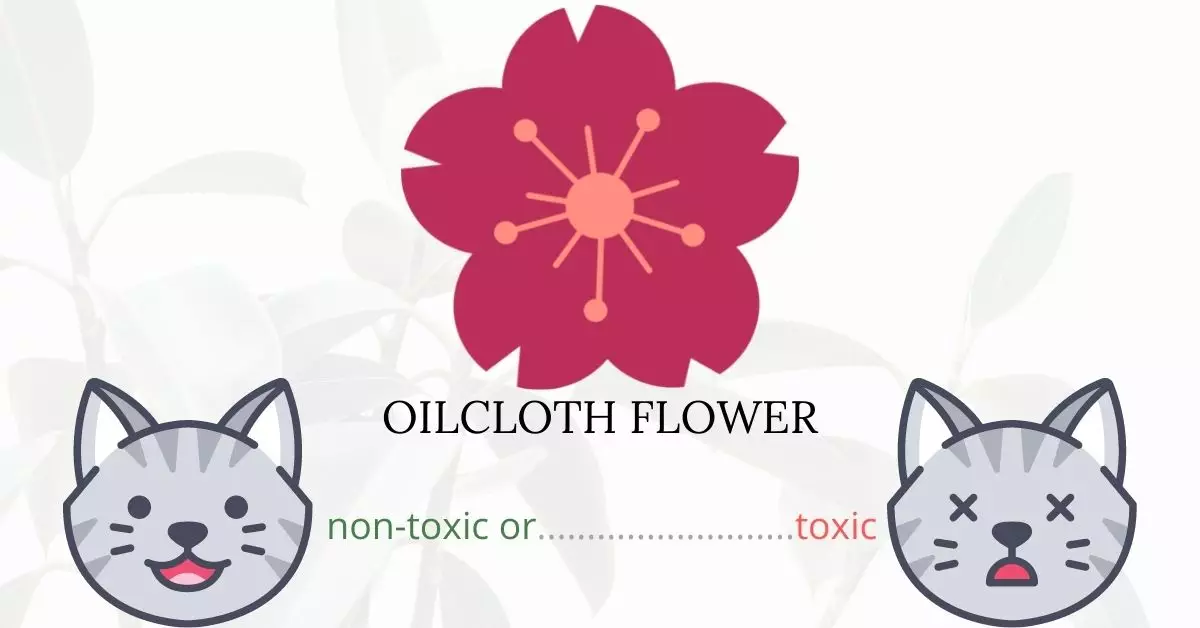Yes, the oilcloth flower is toxic to cats. Every part of the plant, including the leaves, roots, stem, blossom, and pollen, contains insoluble calcium oxalates. These are needle-like crystal bundles which, when ingested, can cause harm to cats. Most cats, upon ingesting, are likely to spit out the plant due to the immediate burning sensation caused by these crystals. However, those that do ingest it often show signs of oral irritation, which can be followed by vomiting and respiratory challenges. In severe cases, the inflammation can lead to significant swelling of the upper airways, potentially causing asphyxia. Immediate veterinary care is essential if a cat has consumed any part of the oilcloth flower.
This article has been written in collaboration with a team of experienced DVMs (doctors of veterinary medicine). Through their insights and expertise, we aim to provide accurate and up-to-date information on the potential risks associated with various plants, with a specific focus on the oilcloth flower in this instance. Furthermore, our research has been enriched by high-authority websites such as ASPCA and PetMD to ensure comprehensive coverage on the topic.
Clinical Signs of Oilcloth Flower Poisoning in Cats
When a cat comes into contact with, or, more severely, ingests the oilcloth flower, it can exhibit a range of clinical signs due to the toxic components of the plant. The insoluble calcium oxalates found in the plant form needle-like crystals that can cause severe irritation and inflammation in the cat’s body. Here’s a breakdown of the clinical signs and the underlying causes:
- Burning and Aching in the Mouth: This occurs due to the needle-like crystals piercing the soft tissues of the mouth, causing immediate pain and discomfort.
- Vomiting: Ingestion of the plant material can irritate the gastrointestinal tract, leading to vomiting as the body tries to expel the toxic substance.
- Excessive Salivation: The burning and irritation in the mouth stimulate the salivary glands to produce more saliva in an attempt to soothe the irritation.
- Throat Irritation: The crystals can also affect the throat, causing inflammation and discomfort.
- Airway Obstruction: Severe swelling and inflammation can occur in the upper airways, which can lead to difficulty breathing and, in extreme cases, can block the airways completely.
- Consciousness Deficit: Lack of oxygen due to airway obstruction can lead to a decrease in consciousness levels, manifesting as drowsiness or unresponsiveness.
- Failure of the Kidneys: The toxins in the oilcloth flower can adversely affect the kidneys, leading to renal failure if not treated promptly.
- Coma: In severe cases, prolonged lack of oxygen and extensive damage to internal organs can lead to coma.
- Death: If left untreated, the cumulative effects of the toxic components can unfortunately be fatal.
Recognizing these signs early and seeking immediate veterinary attention is crucial to managing oilcloth flower poisoning in cats effectively, and mitigating the harmful effects of the plant’s toxic components.
First Aid and Treatment of Oilcloth Flower Poisoning in Cats
Using clean water, remove any residual plant from the cat’s mouth. Give the cat some milk, cheese, or yogurt to help the calcium oxalates precipitate. If the symptoms persist, take the cat to the veterinarian for a more accurate diagnosis and treatment.
The vet will most likely administer an emetic medication to the cat in order to induce vomiting and remove undigested plant matter from the cat’s upper digestive system. If the cat has not vomited, the veterinarian may administer activated charcoal to eliminate the toxins and prevent further absorption.
Because vomiting and diarrhea cause the cat’s fluid levels to drop significantly, intravenous fluids may be administered to restore hydration. Other medications may be prescribed by the veterinarian if deemed necessary.
Recovery from Oilcloth Flower Poisoning in Cats
The cat’s recovery from oilcloth flower poisoning will be determined by the number of plants consumed and the speed with which you seek veterinary care. In cases of minor exposure, the cat should recover completely. If the cat was exposed for an extended period of time or in large quantities, he or she may require supportive drugs to help maintain kidney and liver function.
Prevention of Oilcloth Flower Poisoning in Cats
Oilcloth flowers should not be grown in households with cats. Restrict your cat’s outdoor access if he or she spends the majority of his or her time outside. This reduces the possibility of coming into contact with oilcloth flowers or other toxic plants in your surroundings.
If you love plants but have cats at home, check out these lists:





